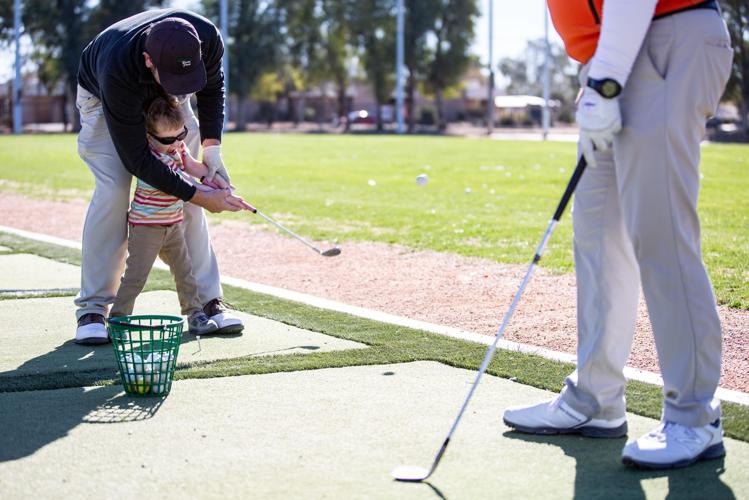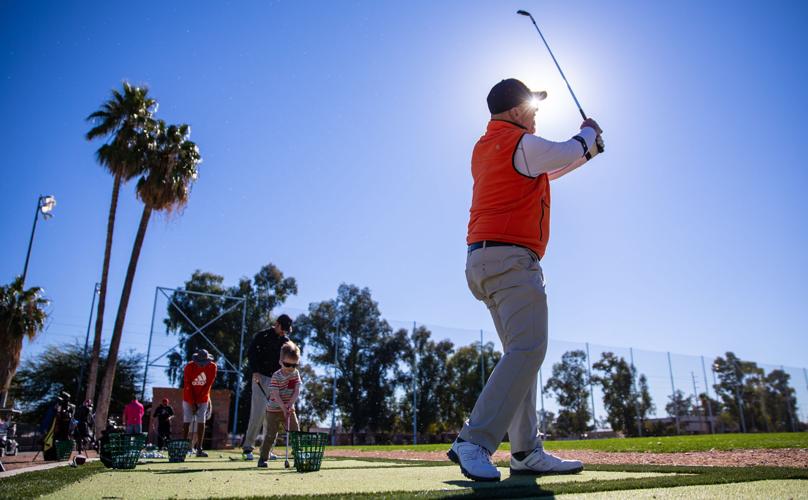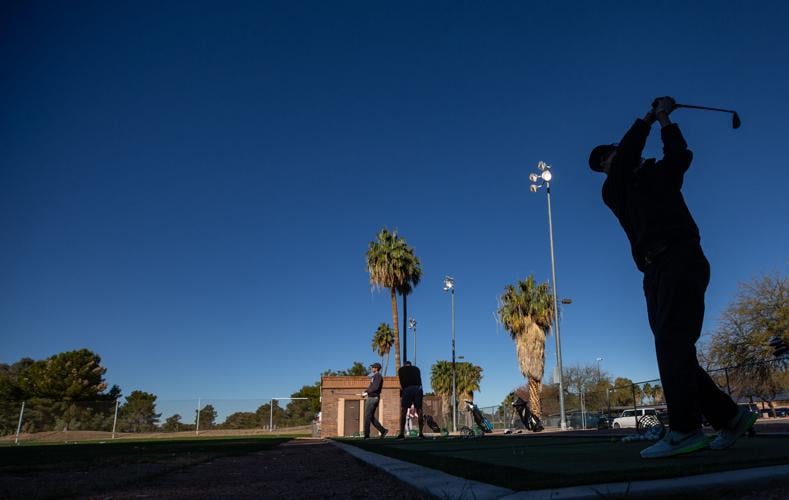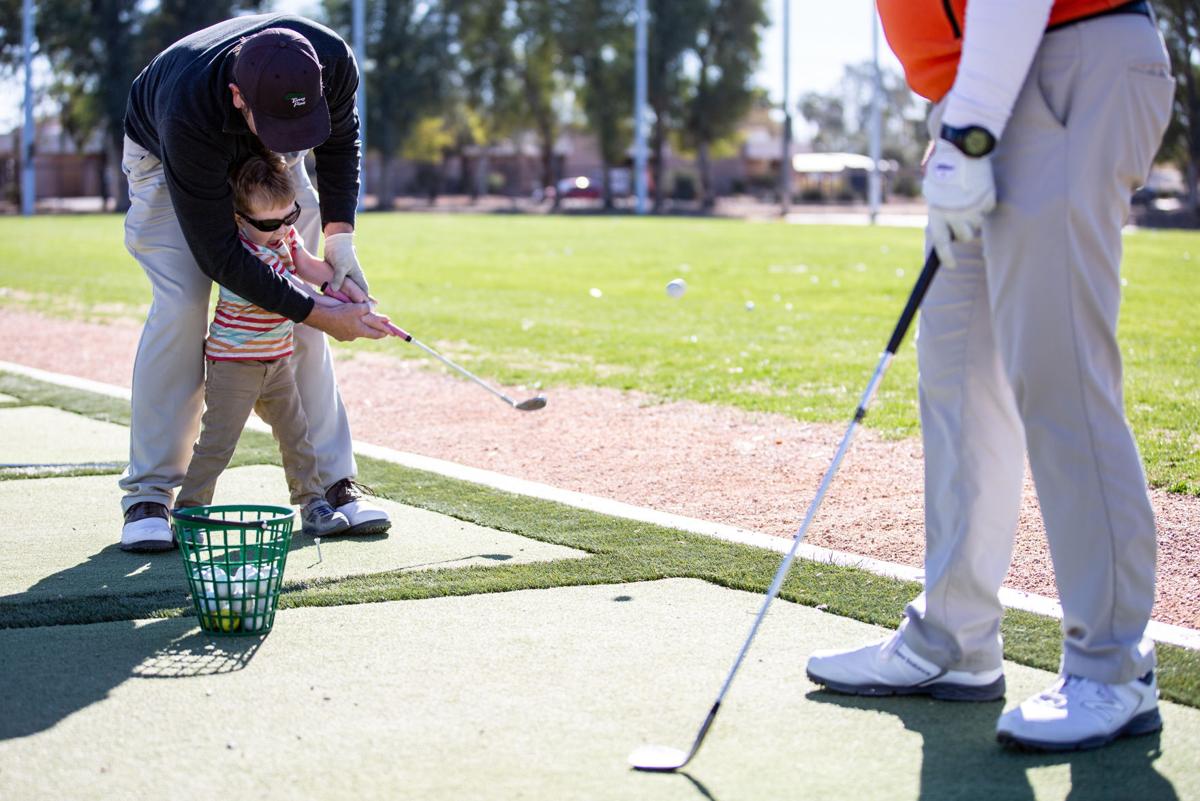The sun has set on a 70-degree February evening. At Randolph golf complex’s driving range, white, yellow, green and orange golf balls fly through the air, hit by those lucky enough to have their own practice bays. Other golfers linger nearby, waiting their turn.
Driving range revenue across Tucson City Golf practice facilities is up 90% from the previous year. From July through December, the ranges brought in $402,731 from the practice tees alone.
That’s a lot of buckets of balls— 73,223 of them, to be exact, at an average price of $5.50 bucket.
Driving ranges offer an outdoor activity for not only seasoned golfers but anyone willing to pick up a club. Buckets of range balls are cheaper than rounds of golf, and the time commitment can be minutes instead of hours.
There is also a lack of stress for newcomers; nobody on the driving range keeps score.
“For somebody who is not an avid golfer and may not necessarily feel comfortable playing, you know, a full round of golf or even nine holes, somebody that wants to get outside and do an outdoor activity going to the practice facility makes sense,” said Robb Palmgren, Tucson City Golf’s general manager. “It is almost like the golf version of a bowling alley.”

Verne Hill practices his swing at the Randolph Golf Course on a sunny Sunday morning. Tucsonans have hit 73,223 buckets of balls in the last year at the city’s practice tees.
Lara Hamwey, who took over as Tucson’s director of Parks and Recreation in January, described the Tucson City Golf courses as green gems in a city where outdoor spaces are at a premium. Hamwey might not be a dedicated golfer yet, but she sees the driving range as a place to de-stress and spend time with her husband and friends.
For Hamwey, golf is a “life sport” that can be played from childhood until late in life.
“A lot of people perceive sometimes that golf is a very expensive sport to participate in, but the way that I got started was I went and found some used clubs at Goodwill and all I do is go to the driving range,” Hamwey said.
“I’ve lived that kind of perception where I thought golf wasn’t for me and found out I didn’t have to be a super athlete to pick up a club and hit a ball.”
Tucson City Golf courses were among the few businesses left untouched by the COVID-19 pandemic. The courses never shut their doors.

Bill Hart practices his swing at the Randolph Golf Course driving range located at 602 S Alvernon Way, on Feb. 7, 2021.
Between March and December, 213,158 rounds of golf were played combined at Tucson City Golf’s courses: El Rio, Fred Enke, Silverbell, Randolph North and Randolph Dell Urich.
By comparison, 231,185 rounds were played during the entire 2019-20 fiscal year — July 2019 to June 2020.
Palmgren said the growth in play is unprecedented.
“Over the last five, six years, we have seen a percentage increase year over year, every year,” he said.
These numbers are “exponentially higher,” he added.
“With the state of Arizona coming down with the regulations that they did, keeping golf a viable business during this pandemic, it gave people something to do. It gave them somewhere to go to be out of the house and be outside to enjoy nature.”







